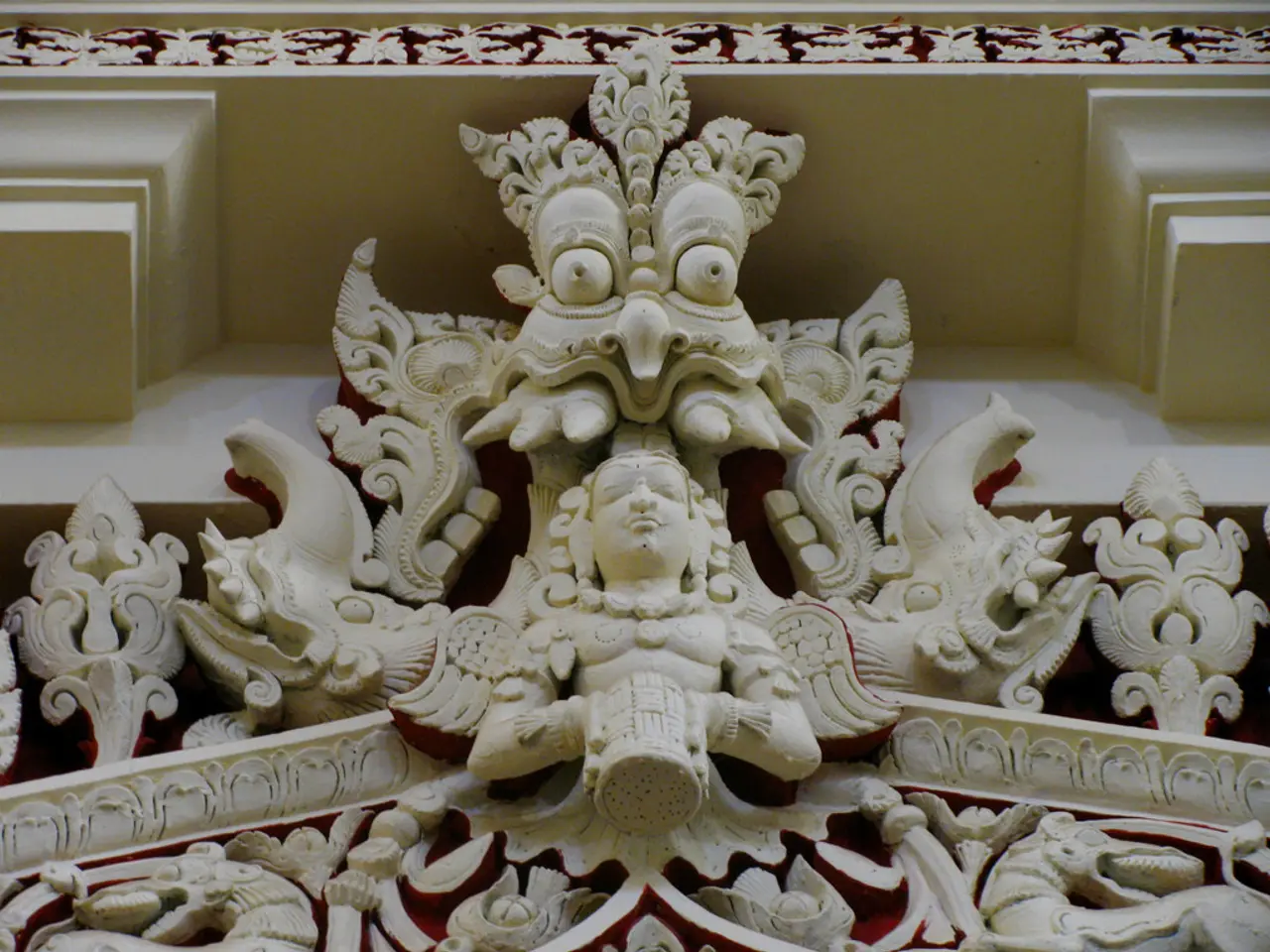Have You Mastered 'Art Appreciation'? Understanding Sculpture alone doesn't guarantee optimal wall decoration.
### Current Trend and Democratization of Sculpture in Home Decor
The summer of 2025 sees a notable shift in home decor trends, with sculpture taking centre stage in interior design. This trend towards **democratization and increased incorporation of sculpture** aligns with broader movements towards personal, character-rich, and meaningful living spaces [1].
Minimalist Maximalism, a popular style in 2025, blends the clean simplicity of minimalism with bold, sculptural forms and layered textures. Sculptural furniture and high-impact accent pieces are central, creating rooms that are calm yet expressive. This trend emphasizes purposeful simplicity with emotional resonance, moving sculpture from purely decorative art to functional, statement-making elements in daily living spaces [3].
The trend favours bold shapes, oversized forms, and sculptural details, often within neutral or earthy color palettes. This approach allows sculpture to be accessible and integrated naturally into both minimalist and maximalist aesthetics, making it approachable for a wide audience [3].
There is an ongoing shift towards embracing craftsmanship, thrifted finds, and handcrafted details, reflecting a democratization where authentic, storied, and imperfect objects—including sculptural pieces—are prized for their personal and cultural narratives, rather than only high-end or gallery art pieces [1].
The rise of digital tools like Decorify Pro is also democratizing interior design by enabling more people to experiment with sculpture and decor virtually before purchase. This technology broadens accessibility by supporting diverse tastes and reducing the risks associated with bold sculptural choices [2].
### How to Incorporate Sculpture into Interior Design
1. **Choose Sculptural Furniture or Accent Pieces**: Integrate furniture with sculptural qualities—such as curved chairs, bold ceramic vases, or textured objects—that act as focal points without overwhelming the space. Neutral palettes help keep these pieces from feeling cluttered while maintaining visual interest [3].
2. **Layer Textures and Shapes**: Combine smooth and rough textures with organic and geometric forms to create balance. Sculptural decor can be combined with natural materials (wood, stone) and plants for a holistic, biophilic vibe connected to current trends [1][3].
3. **Mix Vintage and Handcrafted Sculptures**: Incorporate thrifted or artisan-made sculptures to add character and narrative depth, aligning with the trend towards rustic, lived-in aesthetics that prioritize unique stories behind objects [1].
4. **Use Digital Visualization Tools**: Utilize platforms like Decorify Pro to visualize how a sculpture or a sculptural furniture piece fits in your space before acquiring it. This reduces guesswork and helps tailor your choices to your home's lighting, color schemes, and layout [2].
5. **Focus on Statement Pieces in Key Areas**: Place sculptures in areas where they can be naturally appreciated, such as entryways, living rooms, or dining areas. A single large sculptural item or a curated group of smaller sculptures can serve as a conversation starter and a visual anchor [3].
In summary, the trend in 2025 is about **melding sculpture with practical living through bold, purposeful, and accessible design choices** that reflect personality and craft. The democratization is supported both by the embrace of rustic, vintage, and artisanal pieces and by emerging digital design tools, inviting everyone to confidently incorporate sculpture into their home decor [1][2][3].
Sarah Myerscough gallery, known for focusing on natural materials and elevating craft into fine art, offers a variety of sculptures that fit this trend. The Sculpture Source, an online platform featuring over 50 sculptors, also provides a wealth of options. Gallery Fumi, a contemporary design gallery in Mayfair, is renowned for pushing material limits, while Soho Home offers natural stone plinths for sculpture display.
Remember, sculpture doesn't have to be 'art sculpture'; it can be objets, ceramics, basketry, or antique urns. Choosing a sculpture involves getting to know the artist and their work. Good lighting is crucial for showcasing sculpture; a variety of light sources is recommended. Sculptures can be attached to the wall with brackets, placed classically or edgily, displayed in vitrines, or grouped together for greater impact.
Sculptures can lend an emotional dimension to a room. Hubert prefers daylight for viewing sculpture, while artificial lighting can cast strange shadows. Creative plinths, such as those made from marble, parchment, and gypsum plaster, can be used for sculpture display. Smaller, affordable sculptures can bring a lot of pleasure. Accent lighting can create dramatic effects for sculptures. A tactile quality is desirable in sculpture.
In essence, whether you're decorating an open-plan space with vast windows or a smaller room with fewer walls, sculpture is essential for creating a space that is both aesthetically pleasing and emotionally engaging.
- The democratization of sculpture in home decor is reflected in the summer of 2025, as sculpture takes center stage in interior design, becoming functional and purposeful elements in living spaces.
- Minimalist Maximalism, a popular style in 2025, incorporates sculptural furniture and accent pieces, creating rooms that are calm yet expressive and moving sculpture from decorative art to meaningful elements.
- To layer textures and shapes for balance, consider combining smooth and rough textures with organic and geometric forms, as well as incorporating natural materials and plants, to create a biophilic vibe.
- Utilize digital visualization tools like Decorify Pro to experiment with sculpture and decor virtually before purchase, broadening accessibility by supporting diverse tastes and reducing the risks associated with bold sculptural choices.
- To create a space that is aesthetically pleasing and emotionally engaging, focus on statement pieces in key areas such as entryways, living rooms, or dining areas, whether they are large sculptural items or a curated group of smaller ones.




